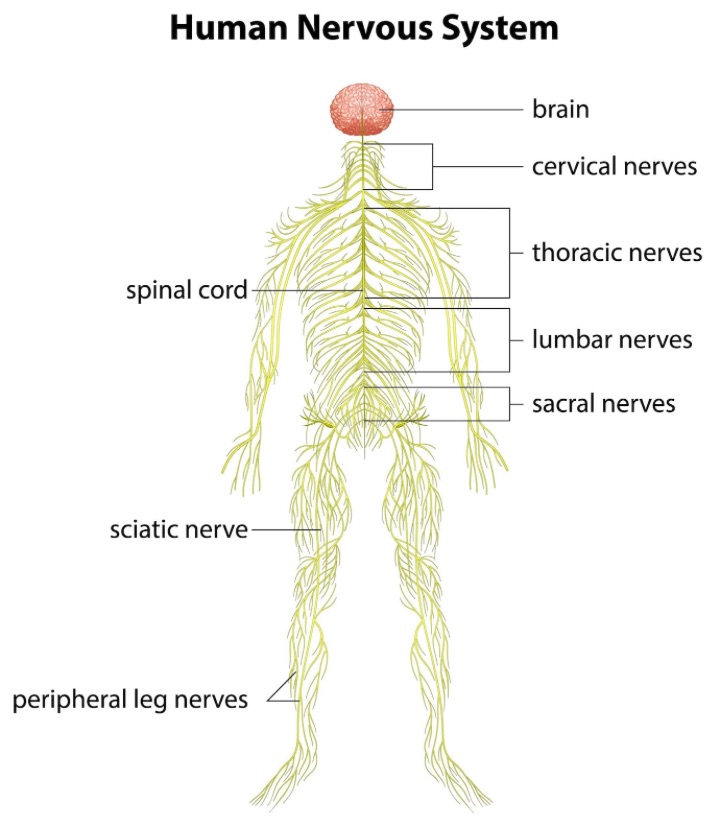Are you experiencing pain, tingling, or weakness that radiates from your lower back down to your leg? If so, you may be dealing with Sciatica.
Sciatica is nerve pain that occurs when the sciatic nerve, which is the longest nerve in your body, becomes compressed or irritated. Common causes include herniated discs, spinal stenosis, and muscle spasms.
Recognizing the symptoms of sciatica is crucial for early intervention and effective treatment. These symptoms can range from mild discomfort to severe pain that hinders your daily activities.
Healthcare professionals employ various diagnostic techniques such as physical examinations and imaging tests to accurately diagnose patients with sciatica.
Non-surgical treatments like medication management, physical therapy exercises, and chiropractic care are often recommended as initial interventions. However, surgical interventions may be necessary in severe cases where conservative methods fail to alleviate symptoms or if there is significant nerve damage.
Rehabilitation and therapy play a vital role in recovering from sciatica and preventing recurrences. Following proper techniques and exercises under professional guidance makes it possible to regain strength and flexibility while minimizing future flare-ups.
The sciatic nerve is the longest nerve in the human body and it is like the superstar of your body, responsible for sending electrifying sensations down your legs, but when it gets irritated, oh boy, get ready for a world of pain.

Photo Credit: brgfx, Freepik
It is often caused by compression or irritation of the sciatic nerve. This large nerve originates from the lower spine and travels through the buttocks and down each leg. It provides both motor and sensory functions to the lower limbs.
When something goes wrong with the sciatic nerve, it can result in intense back pain that radiates down one or both legs. The most common cause of sciatica is a herniated disc in the spine that puts pressure on the nerve roots. Other causes include spinal stenosis, degenerative disc disease, and even pregnancy.
Understanding how this vital nerve works can help you comprehend why you may be experiencing lower back pain or other symptoms.
Sciatica is commonly caused by a herniated disc, where the inner material of a spinal disk protrudes and compresses the sciatic nerve, resulting in pain and other symptoms. Being aware of symptoms and causes is vital so here are few causes;
Sciatica pain is often characterized by acute low back pain that radiates down the buttock and leg, caused by pressure around the sciatic nerve. Back and leg pain lasts anywhere from few minutes to hours.
The most common symptom of sciatica is a burning and sharp pain that starts in the lower back or buttock and travels down one leg. This pain may range from mild to severe and may be accompanied by tingling, numbness, or weakness in the affected leg.

Photo Credit: Racool_studio, Freepik
Other severe symptoms include difficulty sitting or standing for prolonged periods and pain that worsens with movement or coughing. If you’re experiencing these symptoms, it’s important to seek medical attention for an accurate diagnosis and appropriate treatment for sciatica.
Healthcare professionals can accurately diagnose the underlying cause of your leg pain associated with sciatica using various imaging techniques, such as MRI or CT scans. These diagnostic methods allow them to visualize the structures in your lower back and identify any abnormalities that may be compressing or irritating the sciatic nerve.
By pinpointing the specific cause of your symptoms, they can develop an effective treatment plan tailored to your needs. The images obtained from these scans provide detailed information about the condition of your spine, including split discs, bone spurs, or spinal stenosis, which are common culprits.
These imaging techniques can also help rule out other potential causes of leg pain, ensuring an sciatica is diagnosed properly and appropriate treatment for your condition is followed.
Explore the various non-surgical options available to alleviate your sciatic pain and regain mobility in your legs. Non-surgical treatments provide effective relief for many people with mild to acute sciatica.
Therapy is crucial in managing back and buttock pain associated with this condition. A skilled therapist can design an exercise program tailored to your specific needs, focusing on strengthening the core muscles, improving flexibility, and relieving pressure on the sciatic nerve.
Manual therapies such as spinal manipulation or massage can help reduce inflammation and promote healing.
Treatment options may include hot/cold therapy, transcutaneous electrical nerve stimulation (TENS), or acupuncture.

Photo Credit: Freepik
It’s important to consult with a healthcare professional who can evaluate your symptoms and determine the best course of non-surgical treatment for you. Over-the-counter pain relievers can also be a solution to help relieve pain.
Various surgical options are available for individuals with severe sciatica that can provide long-term relief and improve their overall quality of life. If conservative treatments haven’t effectively alleviated your symptoms, surgery may be a viable option. Here are four surgical interventions people with sciatica get commonly for chronic pain and severe cases:
It’s important to consult with a qualified healthcare professional who specializes in spinal surgery to determine which surgical intervention is most suitable for your specific case.
Rehabilitation and therapy are essential components of the comprehensive approach to managing severe sciatica, as they can help improve strength, flexibility, and overall function. When dealing with sciatica symptoms such as pain, numbness, or weakness in the back, hips, and legs, a personalized rehabilitation program can be tailored to address individual needs.
Physiotherapy focuses on reducing pain and inflammation through manual therapy, stretching exercises, and core strengthening exercises. These interventions aim to alleviate nerve compression and restore normal movement patterns. Additionally, rehabilitation can assist in correcting posture imbalances that may contribute to sciatic nerve irritation.
A skilled physical therapist will guide patients through gradual progression of exercises while ensuring proper technique and safety. By incorporating rehabilitation into the treatment plan for early cases of sciatica, individuals have an increased likelihood of symptom relief and improved quality of life.
Sciatica usually can be managed by prioritizing regular exercise and maintaining a strong core to support your spinal nerve in the lower back. Engaging in exercises that strengthen your abdominal and back muscles can help alleviate pressure on the sciatic nerve.
Additionally, maintaining good posture and practising proper body mechanics when lifting heavy objects can reduce strain on your back and decrease the likelihood of flare-ups.

Photo Credit: gstudioimagen, Freepik
Non surgical treatments such as physical therapy, chiropractic care, and acupuncture can also provide pain relief and assist with the management of sciatica. These therapies focus on reducing inflammation, improving flexibility, and restoring normal function to the affected area.
It is essential to consult with a healthcare professional for an accurate diagnosis and treatment plan tailored to your specific needs.
By following these preventive measures and seeking appropriate treatment, you can effectively reduce the frequency and severity of sciatica recurrences. Remember, proactive self-care is key in managing this condition long-term.
Sciatica can be triggered by various factors, including herniated discs, spinal stenosis, muscle inflammation, and nerve compression due to injury or degenerative conditions.
Treatment for sciatic nerve pain typically involves a combination of self-care measures, such as rest, hot/cold therapy, and gentle stretching, along with medical interventions like pain medication, physical therapy, and in some cases, surgical intervention.
There is no instant cure for sciatica, but a comprehensive approach that combines pain management, targeted exercises, and addressing the underlying cause can help alleviate symptoms and promote healing over time.
Red flags for sciatica include severe or worsening symptoms, sudden loss of bladder or bowel control, progressive muscle weakness, and numbness in the groin area. These symptoms may indicate a more serious underlying condition and should prompt immediate medical attention.